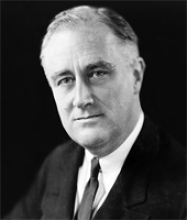Whose Internet? NC Communities Should Defend Freedom to Build Networks
Durham's Herald Sun published our op-ed about community broadband networks in North Carolina. Reposted here:
Who should decide the future of broadband access in towns across North Carolina? Citizens and businesses in towns across the state, or a handful of large cable and phone companies? The new General Assembly will almost certainly be asked to address that question.
Fed up with poor customer service, overpriced plans and unreliable broadband access, Wilson and Salisbury decided to build their own next-generation networks. Faced with the prospect of real competition in the telecom sector, phone and cable companies have aggressively lobbied the General Assembly to abolish the right of other cities to follow in Wilson and Salisbury's pioneering footsteps.
The decision by Wilson and Salisbury to build their own networks is reminiscent of the decision by many communities 100 years ago to build their own electrical grids when private electric companies refused to provide them inexpensive, reliable service.
An analysis by the Institute for Local Self-Reliance (http://tiny.cc/MuniNetworks) compares the speed and price of broadband from incumbent providers in North Carolina to that offered by municipally owned Greenlight in Wilson and Fibrant in Salisbury.
Wilson and Salisbury offer much faster connections at similar price points, delivering more value for the dollar while keeping those dollars in the community. For instance, the introductory broadband tiers from Wilson (10 downstream/10 upstream Mbps) and Salisbury (15/15 Mbps) beat the fastest advertised tiers in Raleigh of AT&T (6/.5 Mbps) and TWC (10/.768 Mbps). And by building state-of-the-art fiber-optic networks, subscribers actually receive the speeds promised in advertisements. DSL and cable connections, for a variety of reasons, rarely achieve the speeds promised.
Curbing innovation



